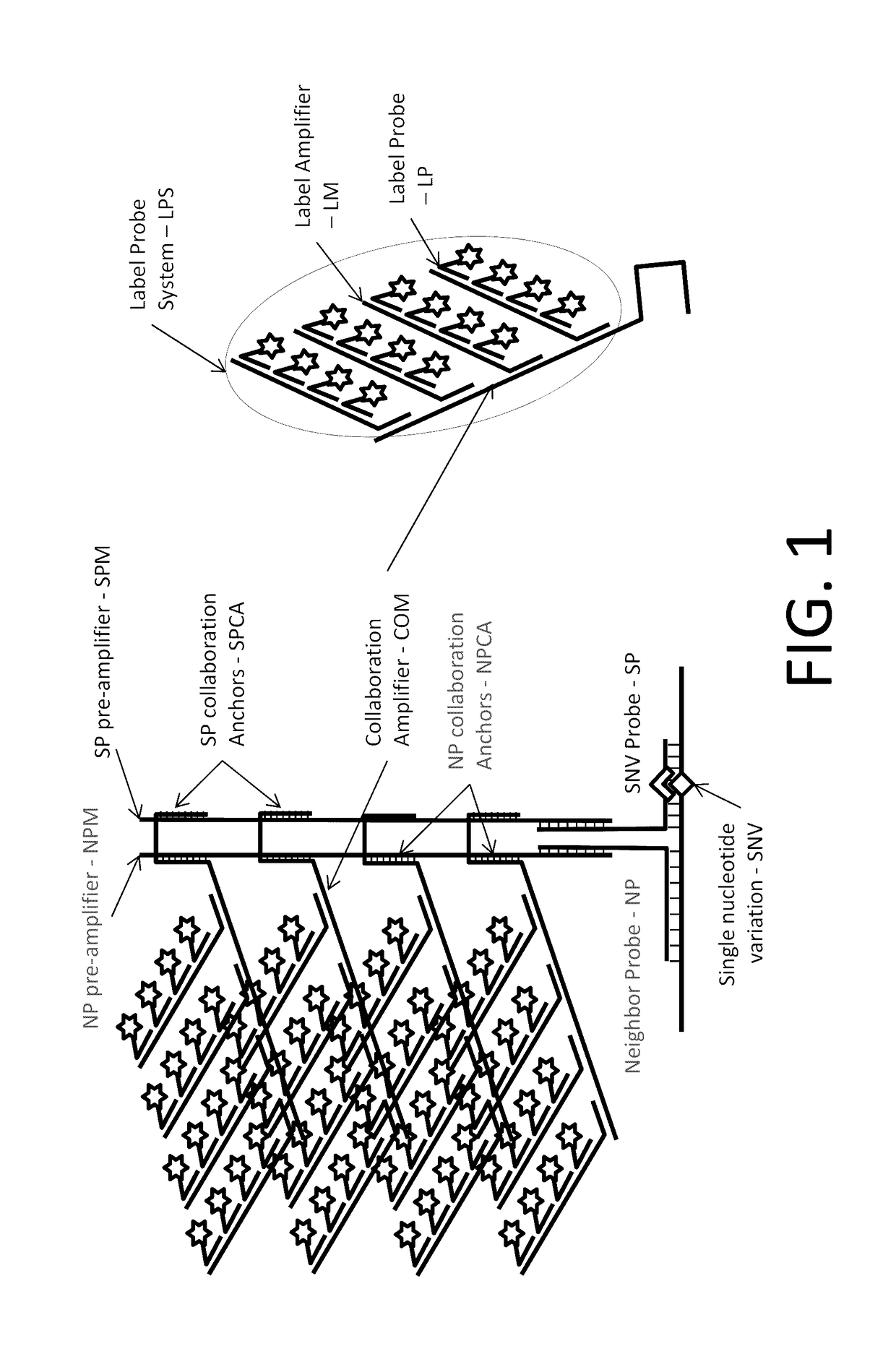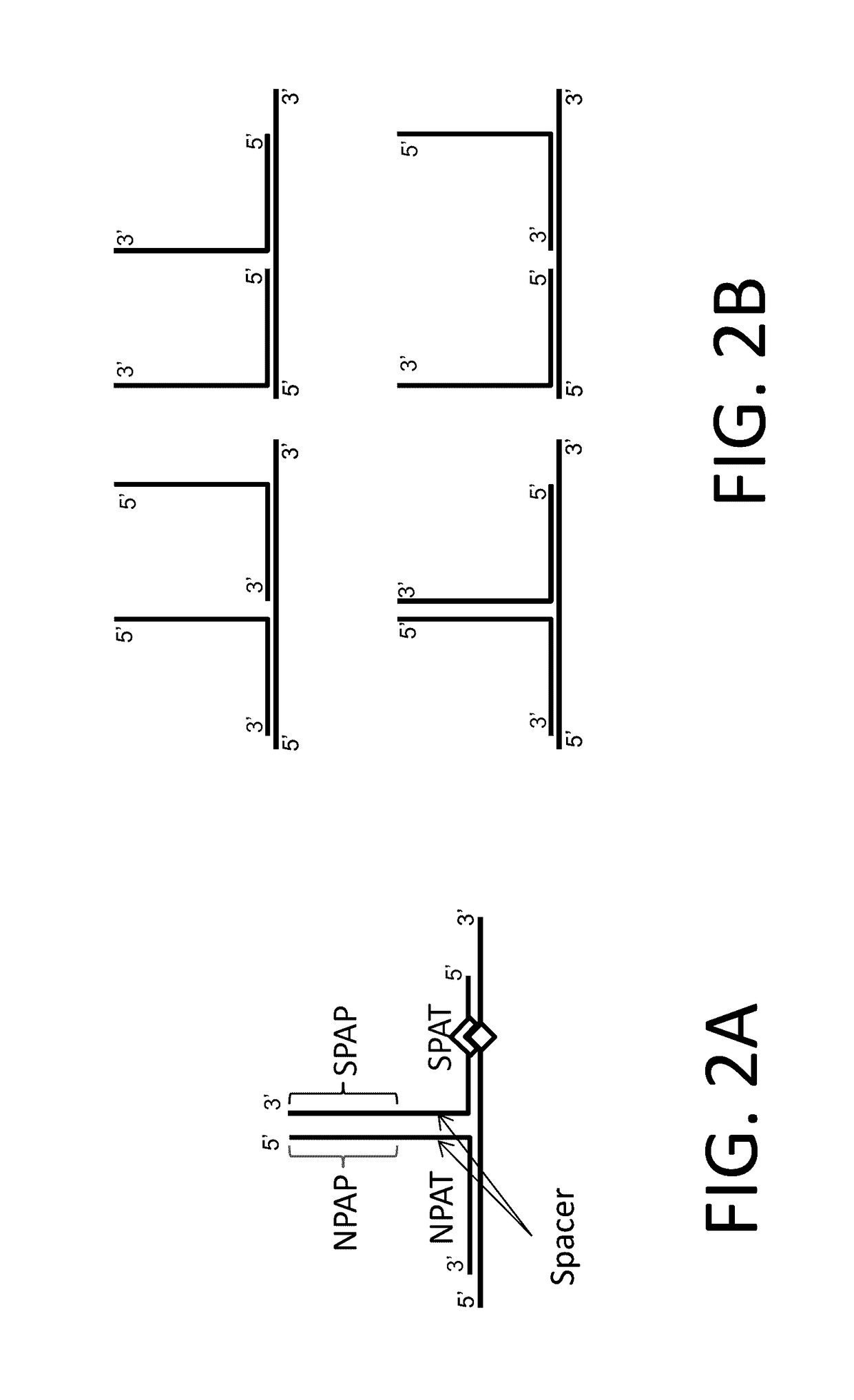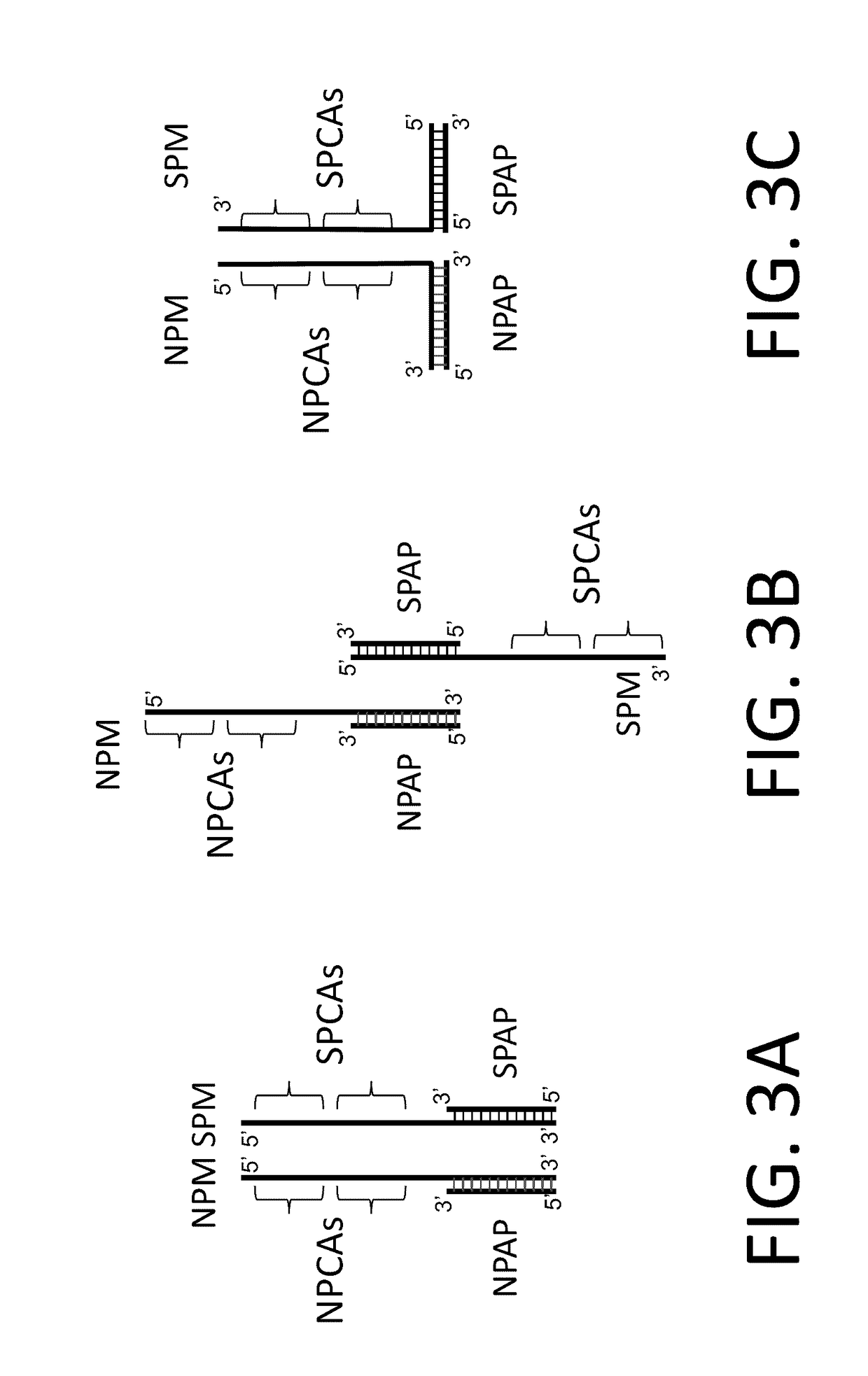In situ detection of nucleotide variants in high noise samples, and compositions and methods related thereto
a nucleotide variant and high noise technology, applied in the field of in situ detection of nucleotide variants in high noise samples, can solve problems such as high background
- Summary
- Abstract
- Description
- Claims
- Application Information
AI Technical Summary
Benefits of technology
Problems solved by technology
Method used
Image
Examples
example i
Detection of Point Mutations
[0120]This example describes two exemplary applications of the invention in detecting point mutations in tissue samples.
[0121]FIG. 13 shows detection of BRAF mRNA in sections of formalin fixed and paraffin embedded (FFPE) pellet of melanoma cell lines. Melanoma cell lines negative (CHL-1, a and a′) and positive (SK-MEL-28, b and b′) for the V600E point mutation of BRAF were assayed. Cells were hybridized to a target probe system (TPS) containing the wild type detection probe (WDP, sequence: gagatttcA*ctgtagc, A* is a BNA modified base) (a and b) and a TPS containing a BRAF V600E mutation detection probe (MDP, sequence: gagatttcT*ctgtagc, T* is a BNA modified base) (a′ and b′) separately. An SGC configuration substantially similar to the one shown in FIG. 1 was used. Signal with probe targeting wild type BRAF was observed in wild type cells only (a) while V600E mutation was detected in V600E positive cells only with V600E MDP (b′).
[0122]FIG. 14 shows the e...
PUM
| Property | Measurement | Unit |
|---|---|---|
| length | aaaaa | aaaaa |
| flexibility | aaaaa | aaaaa |
| acid | aaaaa | aaaaa |
Abstract
Description
Claims
Application Information
 Login to View More
Login to View More - R&D
- Intellectual Property
- Life Sciences
- Materials
- Tech Scout
- Unparalleled Data Quality
- Higher Quality Content
- 60% Fewer Hallucinations
Browse by: Latest US Patents, China's latest patents, Technical Efficacy Thesaurus, Application Domain, Technology Topic, Popular Technical Reports.
© 2025 PatSnap. All rights reserved.Legal|Privacy policy|Modern Slavery Act Transparency Statement|Sitemap|About US| Contact US: help@patsnap.com



